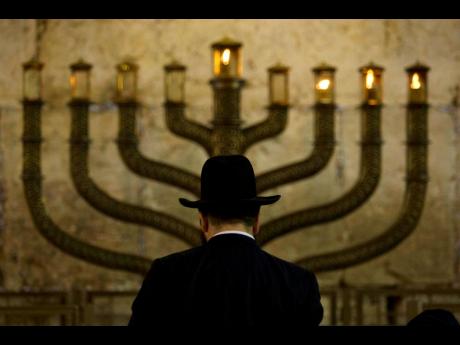What to know about Hannukah and how it’s celebrated around the world
Hanukkah — also spelled Chanukah or other transliterations from Hebrew — is Judaism’s ‘festival of lights’. On eight consecutive nightfalls, Jews gather with family and friends to light one additional candle in the menorah — a multibranched candelabra.
In Hebrew, Hanukkah means ‘dedication’, and the holiday marks the rededication of the Temple in Jerusalem in the 2nd century BC, after a small group of Jewish fighters liberated it from occupying foreign forces.
With the tiny supply of ritually pure oil that they found in the temple, they lit the menorah — and it stayed lit for eight days. The ritual of lighting a nightly candle, as well as the emphasis on cooking foods in oil such as potato pancakes called latkes, memorialise this miraculously long-lasting oil.
WHEN IS HANUKKAH 2023?
The dates of the holiday are based on Hebrew month of Kislev, which usually coincides with November-December in the Gregorian calendar.
This year, Hanukkah will be celebrated from December 7 to 15.
DOES HANUKKAH OBSERVANCE VARY?
Jews across the religious observance spectrum — from Reform to Conservative to Orthodox — focus on the same theme of bringing light into the darkness and emphasising that even a small, against-the-odds effort can have a transforming effect.
For this reason, even though the Talmud reflects a dispute over the order of lighting, most start with one candle and increase the lighting by one more candle each night while reciting or chanting special blessings.
The candles are added from right to left, but lit from left to right on the menorah, thus always starting with the newest light. The special menorah used for Hanukkah has eight branches, with a ninth place for the candle called shamash from which all others are lit.
The tradition calls for candles with a real flame, though some also use electric ones in public displays, such as in hospitals, for safety reasons.
HOW IS HANUKKAH CELEBRATED?
A menorah is lit in each household and traditionally is placed where it can be seen from the outside, such as a doorway or windowsill, to symbolise the spreading of God’s light to all nations.
The lighting of menorahs in city streets and parks has become more prominent in recent years in countries around the world, including in front of public landmarks.
In addition to menorah lightings, giving to charity and social works are also part of the celebration for many, reflecting the belief that the Jewish people are called by God to help make the world better for all.

